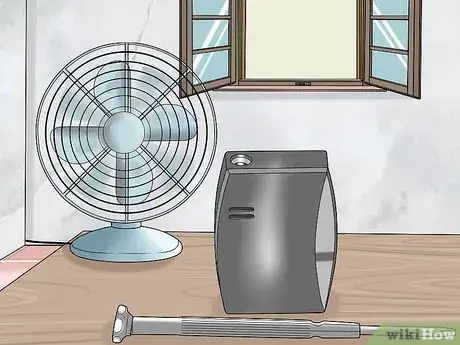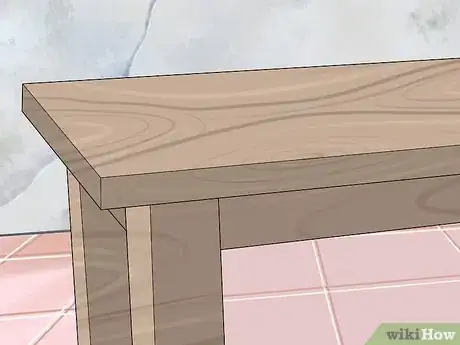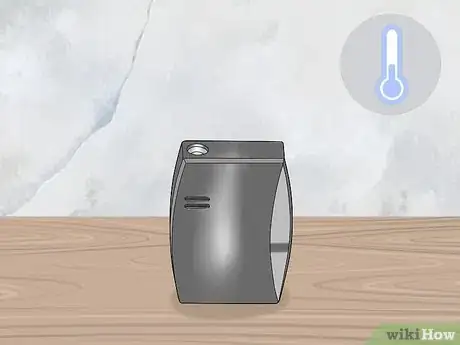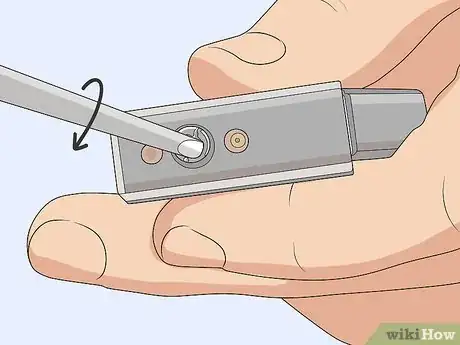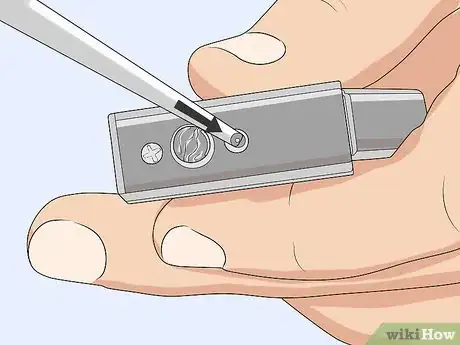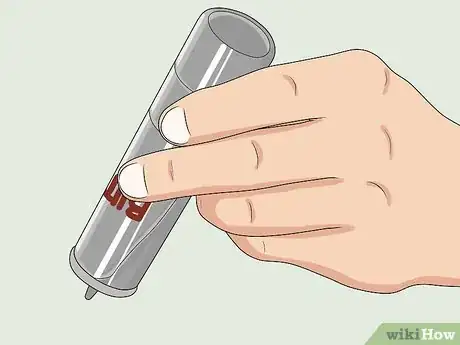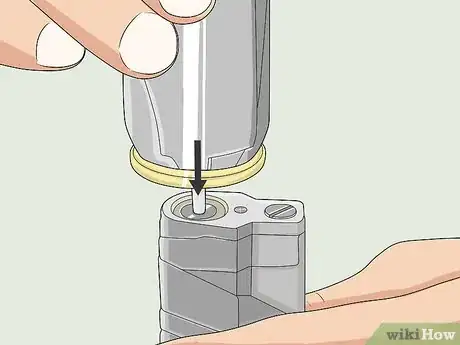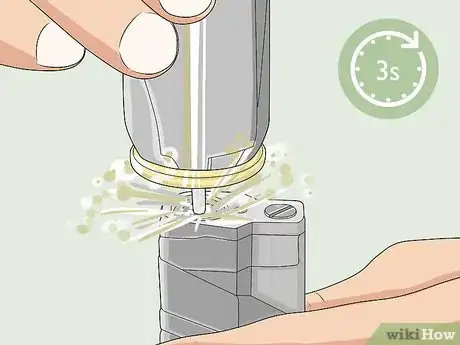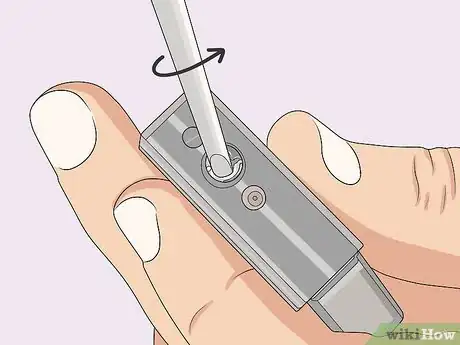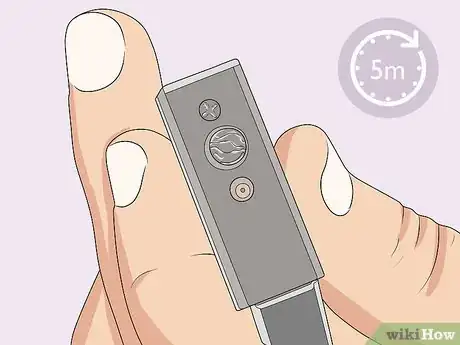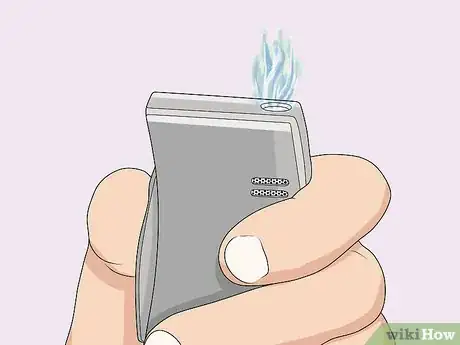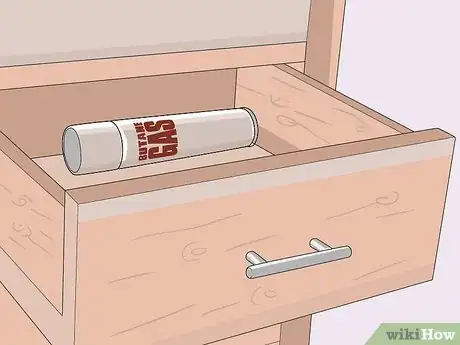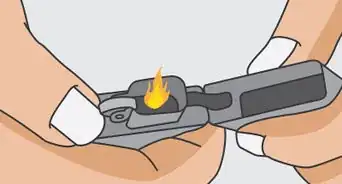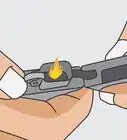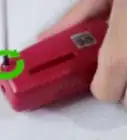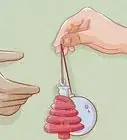This article was co-authored by wikiHow Staff. Our trained team of editors and researchers validate articles for accuracy and comprehensiveness. wikiHow's Content Management Team carefully monitors the work from our editorial staff to ensure that each article is backed by trusted research and meets our high quality standards.
There are 9 references cited in this article, which can be found at the bottom of the page.
wikiHow marks an article as reader-approved once it receives enough positive feedback. In this case, 93% of readers who voted found the article helpful, earning it our reader-approved status.
This article has been viewed 289,036 times.
Learn more...
There are several versions of lighters that use butane as a fuel source. But whether you have a torch lighter, an electronic butane lighter, or even a butane cigarette lighter, refilling a butane lighter is really easy to do. First, you need to purge any remaining air and fuel from the lighter. Then, you can pump the butane fuel into the lighter and wait a few minutes before you test it to make sure it's working.
Steps
Purging the Lighter
-
1Work in a well-ventilated area. Your lighter still has a small amount of butane in it, which is combustible and can irritate your eyes and skin. Purge and refill your lighter in an open space or work in a well-ventilated room.[1]
- Open up windows if you're refilling your lighter indoors.
- Turn on a fan to improve air circulation in the room.
-
2Use a flat, sturdy surface to work on. The remaining butane in your lighter may spray out onto your working surface, so lay down some newspaper or a drop cloth when you're refilling it. Use a clean and stable surface like a desk, countertop, or table.[2]
- If you're working outside, make sure you use a surface that's clean and dry so you don't get any dirt or moisture in your lighter.
Advertisement -
3Make sure the lighter isn't hot. Don't refill your lighter immediately after you've used it. Butane is highly combustible, so you need to allow enough time for your lighter to completely cool off before you try to refill it.[3]
- If you recently used your lighter, wait at least 30 minutes before you refill it.
Tip: Put your lighter in a refrigerator for 5 minutes to cool it down faster.
-
4Turn the flame adjuster knob clockwise with a screwdriver. You want the flame height adjuster to be set to the minimum height setting. Use a small screwdriver to turn the dial clockwise as far as it will go. The adjusting screw is a larger brass screw with a slot for a screwdriver.[4]
- Some butane lighters come with a special key to turn the adjusting screw.
- Your lighter may have a wheel to adjust the flame height instead of a screw, so you don't need to use a screwdriver to set it to the minimum setting.
- Don't force the screw. If it isn't turning anymore, it may already be set to the minimum setting.
-
5Push the refilling valve with the screwdriver to let out the air inside. Hold the lighter away from your face and press down on the valve with the end of the screwdriver to open it. Keep the valve open until you no longer hear a hissing sound.[5]
- Any air or gas left inside the lighter can prevent the butane from being injected into it and can break your lighter.
Injecting the Butane
-
1Hold the lighter in an upside-down position. To avoid accidentally injecting air into the lighter, always refill it in an upside-down position. Injecting air into the lighter can dilute the fuel inside of it and can cause it to malfunction.[6]
- Holding the lighter upside-down also means you'll need to hold the can of butane upside-down when you refill your lighter.
-
2Shake the butane gas refill can. Inside the can of butane are the butane itself and a propellant. The heavier butane will settle at the bottom of the can so you need to shake the bottle to prime it.[7]
- Give the can 5-6 good shakes to prime it.
-
3Press the stem of the can into the refill valve on the lighter. Holding the lighter upside-down, fit the end of the stem from the can of butane into the refill valve. Don't hold the lighter at an angle or it could bend the stem of the can and possibly let air in. It should fit tightly over the valve.[8]
Tip: If the stem is too large or small, you may need to use an adapter to allow it to fit securely. The can of butane may come with an adapter. You can also purchase one at a department store or online.
-
4Use 3-second bursts to refill the lighter. With the stem of the can fit into the valve of the lighter, pump a few 3-second bursts to spray the butane into the lighter. You can tell that the lighter is full because the butane will start to leak from the stem and won't go into the lighter.[9]
- Depending on how empty the lighter is, it may take 2-3 bursts to fill it.
- Some lighters have a gauge that shows the fuel level. Check the gauge to make sure it's full.
- Don't overfill the lighter. As soon as it feels full, stop adding butane.
Testing the Lighter
-
1Turn the flame adjuster back up. Now that the lighter has been refilled with butane, use your screwdriver to turn the flame height adjusting dial back up. You don't need to turn it up all the way, but you do want to increase the height so the lighter can be tested properly.[10]
- Keeping the lighter set at the minimum setting can make it harder to start, especially if it was completely out of fuel.
-
2Wait 5 minutes to allow the butane to reach room temperature. The butane from the can was compressed and colder than room temperature, where it burns best. Waiting 5 minutes also allows any excess butane from the exterior of the lighter to evaporate so it won't catch fire.[11]
Tip: If there is still butane visible on the outside of your lighter, wait another 5 minutes to let it evaporate before you start your lighter.
-
3Light the lighter to produce a flame. Hold the lighter a safe distance away from you and activate the mechanism that ignites the lighter. You should have an even burning flame. Start and stop the lighter a few times to make sure it's flowing smoothly.[12]
- Adjust the flame height to your desired setting.
- If the lighter doesn't produce a flame or the flame is really weak, you may need to add more butane.
-
4Store the butane in a secure location. When you're finished refilling your lighter, put the can of butane in a place that's safe and away from heat. Butane is highly combustible, so you don't want to risk an explosion or fire.[13]
- A secure drawer is a safe place to store butane.
- If you have small children, be sure to store the butane in a hard-to-reach area.
Things You'll Need
- Butane gas refill can
- Small screwdriver
References
- ↑ https://homegearsreview.com/butane-lighters-advance-tips/
- ↑ https://homegearsreview.com/butane-lighters-advance-tips/
- ↑ https://homegearsreview.com/butane-lighters-advance-tips/
- ↑ https://youtu.be/u-wiTm-PIoo?t=12
- ↑ https://youtu.be/u-wiTm-PIoo?t=31
- ↑ https://www.holts.com/clubhouse/cigar-101/refilling-a-lighter
- ↑ https://homegearsreview.com/butane-lighters-advance-tips/
- ↑ https://youtu.be/u-wiTm-PIoo?t=51
- ↑ https://youtu.be/u-wiTm-PIoo?t=61
About This Article
To fill any type of butane lighter, you’ll need to purge the air and remaining fuel from the lighter first. Do this in a well-ventilated area, since butane fumes can irritate your lungs. Lay down some newspaper or a drop cloth on your work surface. If you’ve recently used your lighter, wait for it to cool down. Carefully use a screwdriver to turn the flame adjuster knob on your lighter clockwise as far as it will go. Then, with the lighter facing away from you, push the tip of the screwdriver into the refilling valve to let any air out. Keep the valve open until you no longer hear the hiss of air escaping from the lighter. Next, shake your butane refill can well. Hold the lighter upside-down and push the stem of the butane can into the refill valve on the lighter. Pump butane into the lighter in 3-second bursts until you see butane starting to leak out around the stem. Or, if your lighter has a fill gauge, check that to see if it is full. When you’re done, use the screwdriver to turn the flame adjuster counterclockwise to the desired setting. Wait 5 minutes for the butane in the lighter to warm up to room temperature, then test the lighter to make sure it’s working properly.
